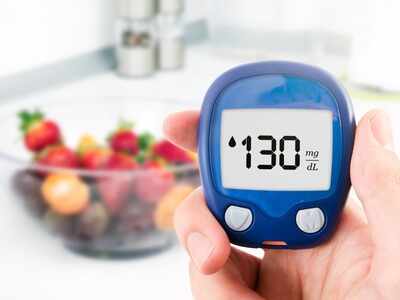6 Warning Signs of High Blood Sugar You Shouldn’t Ignore – See a Doctor Immediately

High blood‑sugar episodes aren’t always announced by a dramatic fainting spell; more often they whisper through everyday discomforts we tend to rationalise away “I’m just tired,” “Maybe I over‑ate,” “It’s the heat.” Here are six subtle‑but‑serious signals your body may be running on too much glucose. If two or more ring true, don’t self‑diagnose on Google book a lab test and talk to a clinician as soon as possible.....CONTINUE READING THE FULL STORY HERE
1. You’re Thirsty No Matter How Much You Drink
Then excess glucose crowds your bloodstream, the kidneys scramble to flush it out, pulling water along for the ride. The result is relentless dry‑mouth and a bottle‑in‑hand habit that still doesn’t quench the feeling. If you find yourself waking at night just to gulp water, pay attention.
2. Bathroom Trips Are Off the Charts
All that extra urination isn’t simply the price of hydrating it’s your body’s emergency plumbing. Frequent nighttime trips (nocturia) or volumes you could measure in litres hint that your renal system is in overdrive clearing sugar.
3. Vision Goes Soft‑Focus
High glucose changes the shape of the eye’s lens by drawing in fluid, making near‑or‑far objects blur unpredictably. People often buy new reading glasses thinking their prescription changed, when it’s actually glucose swelling the lens.
4. Cuts and Bruises Heal Like Dial‑Up Internet
Glucose‑rich blood thickens and circulates more sluggishly, depriving damaged tissue of oxygen and white‑blood‑cell reinforcements. A garden scratch that lingers for weeks isn’t just annoying; it’s a biochemical red flag.
5. Tingling or Numbness in Feet and Fingers
Over time, sugar can erode the insulating sheath around nerves (peripheral neuropathy). Early on, it shows up as pins‑and‑needles, burning, or an odd “stocking‑glove” numbness pattern. Waiting until it turns into outright pain risks permanent nerve damage.
6. Unexplained Fatigue After Meals
You’d expect energy, but a post‑lunch crash that feels like your limbs are weighted blankets may signal your cells aren’t actually absorbing glucose they’re locked out by insulin resistance, leaving fuel stranded in the bloodstream.
Why Immediate Action Matters
Chronically high blood sugar batters blood‑vessel walls, setting the stage for heart disease, stroke, kidney failure, and vision loss. Early intervention diet tweaks, exercise, meds if needed can reverse the trend or at least slow the avalanche.
Do This Next
1. Capture Data: Schedule a fasting blood‑glucose or HbA1c test; numbers beat guesswork.
2. Track Patterns: Note when thirst, blur, or fatigue strike; patterns help doctors fine‑tune treatment.
3. Don’t DIY Supplements: Cinnamon pills and herbal teas aren’t a substitute for evidence‑based care.
4. Build a Support Loop: Tell a friend or family member; accountability boosts lifestyle changes.
Listen to these whispers now, and you’ll dodge the shout of a full‑blown diabetic crisis later.
Disclaimer: This content including advice provides generic information only. It is in no way a substitute for a qualified medical opinion. Always consult a specialist or your own doctor for more information. NEWSHOUR does not claim responsibility for this information.
